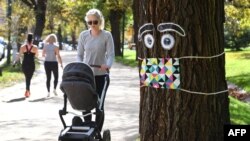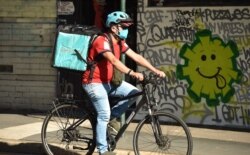Australia's federal, state and territory leaders have agreed on a road map to relax COVID-19 restrictions and get business activity back to normal by July.
The plan, which involves a three-step process, comes as fewer than 20 new coronavirus infections are reported each day.
In the first stage, restaurants and cafes will be allowed to reopen, but with a maximum of 10 customers at a time. Schools and playgrounds will also reopen.
If no major outbreaks are recorded, Australia will move to the second phase. Gyms, cinemas and galleries will reopen, but with only 20 customers at a time.
Stage three will allow gatherings of up to 100 people, and see workers return to their offices. Travel within Australia will resume, along with some limited international travel, including flights between Australia and New Zealand.
It will be up to Australia's states and territories to decide when to implement each stage.
Western Australia had slightly eased some of its disease controls last month, including allowing 10 people to attend indoor and outdoor gatherings.
Further relaxations will be announced Sunday, according to state premier Mark McGowan.
"Back then we were focused more on the social aspects of our lives, and as a result of this success we now have some confidence to take further steps," he said. "This time the focus will be more heavily on the West Australian economy — how can we get our economy going again, how can we start the process of getting people back to work? These are all difficult questions and they are extremely difficult issues to navigate through when all decisions must be considered with the best of health advice."
Australia has had fewer than 7,000 confirmed coronavirus cases of COVD-19 and fewer than 800 people are sick with the disease. Almost 100 people have died.
While the lockdown measures have prevented hospitals from being overwhelmed by coronavirus patients, they have inflicted massive damage on the economy. Unemployment is expected to double to 10 percent.
Australia's central bank Friday predicted the country of 25 million people would face its biggest economic contraction on record.
There was a warning, too, from Prime Minister Scott Morrison, who said that winding back COVID-19 controls would most likely come at a cost to the nation's health.
There would, he said, be more coronavirus outbreaks and "not everything will go to plan."
Australia has tested widely for the disease, closed its international borders and imposed strict social distancing protocols to curb its spread.









